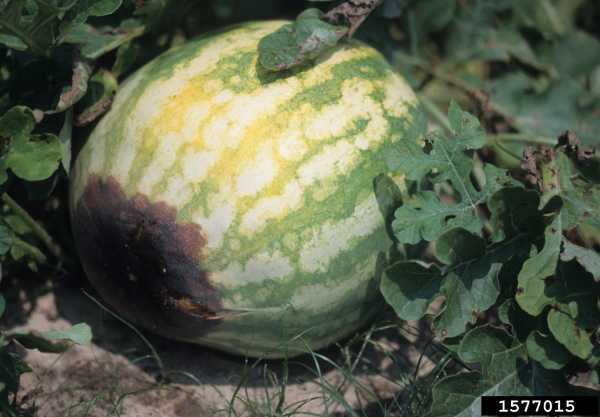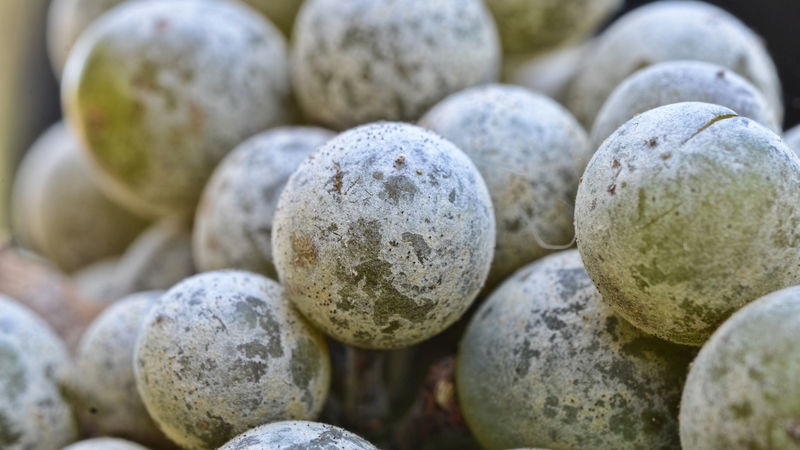5 Tips For Better Nutrient Management In Cucurbits

The symptoms of blossom end rot are pretty typical; the blossom end of the fruit starts to decay. Photo credit: Gerald Holmes, Valent USA Corporation, Bugwood.org.
According to Ron Goldy, senior Extension educator at the University of Michigan, if you are proactive in getting your soil tested as well as getting leaf analyses, they’ve already won half the battle. To help you win the war, Goldy shares five key points for growers to keep in mind to better manage nutrients in your cucurbit crops.
- Look for calcium deficiencies, a common nutritional problem in cucurbits. A calcium deficiency will manifest itself as blossom end rot in the fruit.“The symptoms of blossom end rot are pretty typical; the blossom end of the fruit starts to decay,” Goldy explains. “Calcium is not very mobile in the plant, and that area (blossom) is farthest away from the roots where most of the calcium is taken up, so it just doesn’t get there.”He warns however that a calcium deficiency may not necessarily mean a deficiency in the soil. It might just be deficient in the plant. Soil must be tested to find out for sure.If there is enough calcium in the soil, Goldy suggests evaluating irrigation practices to assess whether plants are getting the moisture they need to maximize the mobility of calcium from the soil to the plant.“Plants don’t like a wet/dry-wet/dry cycle. They like to have a continual supply of moisture, and that’s what calcium uses to move from the soil particle over to the roots,” Goldy says.
- Encourage root growth, for stronger, less nutrient-deficient plant.
Typically deficiencies are found in the early fruit, because as the plant matures the root system strengthens and is able to absorb more nutrients from the soil.You can promote good early root development is by making sure the soil is loose and avoiding over irrigating. By watering deeply, then withholding water from the plant, the root system will deepen in search of more water, encouraging deeper rooting and strengthening the plant. - Watch for nutrient excesses, particularly nitrogen.
“The way cucurbit crops respond to excessive nitrogen is just to grow more plants. They will delay flowering at the expense of growing more plants,” Goldy explains.Typically, cucurbits need only 60 to 80 pounds of nitrogen per acre, and it’s easy to exceed that amount if you’re not careful. He says that in the beginning, you’ll want good vegetative growth on the plant, but you’ll want to back off toward the middle of production and allow the fruit to set. Then, possibly up the nitrogen levels after the fruit has set and starts to drain the plant. [P.C.]To avoid nitrogen excesses, Goldy recommends growers apply the nutrient via drip irrigation, which allows for a more controlled application.“[Drip irrigation] gives you the ability to feed the crops weekly or daily if you choose to, and make decisions on a daily or weekly basis as to what their needs might be. You can look at the crop and say, ‘Oh, my growth is a bit excessive this week so I’m going to back off, or I’m going to wait until next week and see what happens,’” he says - Use manure and cover crops as an excellent source of micro and macro nutrients for organic production. In regard to manure, Goldy explains there are a variety of benefits, and that it provides a lot more than just Nitrogen, Phosphorus, and Potassium (NPK) to the plants.“Manure has a lot of organic matter, and that’s where a lot of your micronutrients are locked up. The decay of that organic matter is going to lead to increasing your micronutrients. There is a lot of micro-flora in there — bacteria and fungi that are good for the soil,” he explains.
As for cover crops, Goldy suggests using hairy vetch as a way to help build up nitrogen in the soil.“In my location I can apply it late August or early September and then plow it down in late May — that’s when it has its maximum nitrogen fixation. You can get 100-plus pounds of nitrogen on a good stand, and it releases slowly through the season,” he says.In general, for organic growers, Goldy says having ideal nutrition is a matter of building up the soil over a long period of time and increasing the organic matter so the microbes have something to “chew” on, allowing them to release micronutrients into the soil. - Use plasticulture to help reduce your nutrient inputs. According to Goldy, the benefits of using plasticulture include targeted fertilization and more efficient use of water.“[With plasticulture] you’re not fertilizing the whole acre, you’re fertilizing right where the plants are. Also, you aren’t watering the weeds, so it can help reduce weed pressures because your weeds aren’t growing as much,” he says.The upfront costs may initially intimidate some growers, but Goldy assures there’s a higher return on investment in the end. In some cases, growers have quadrupled yields by using plasticulture, he says.
As a final word of advice, Goldy says nutritional deficiencies and excesses don’t usually spread throughout an entire field — they occur in spots. When scouting, he advises to do so from a tractor, or another higher up place, so the entire field can be surveyed from above, and look out for colored “hot spots.” For confirmation of deficiencies, call your local county Extension office and have someone come to your farm to do an evaluation.









